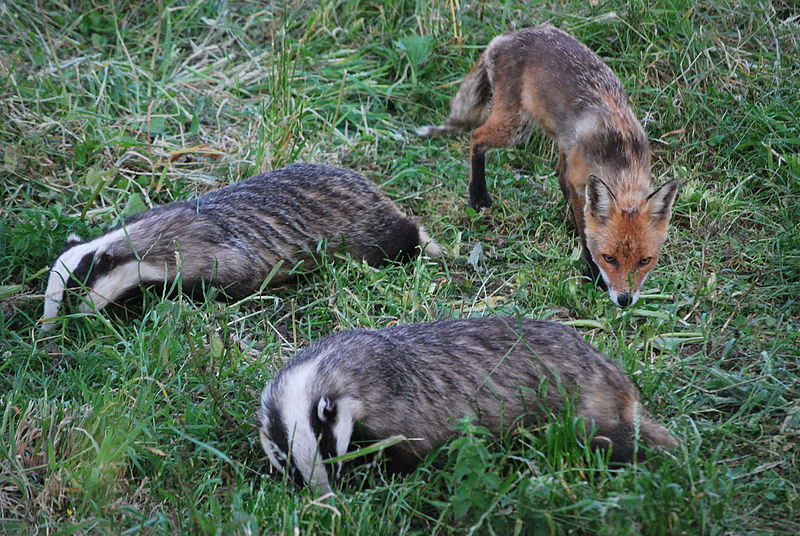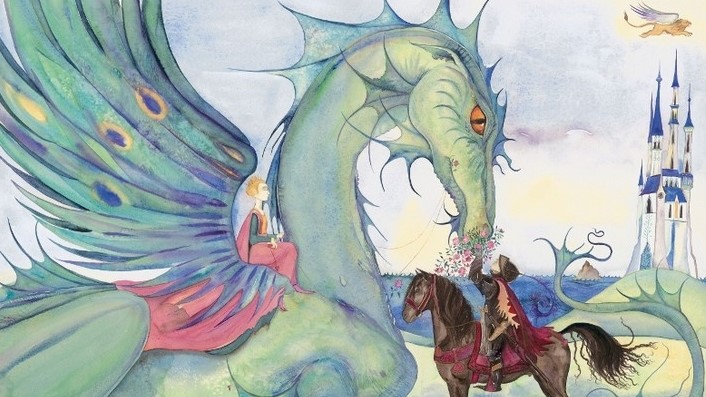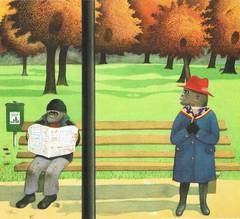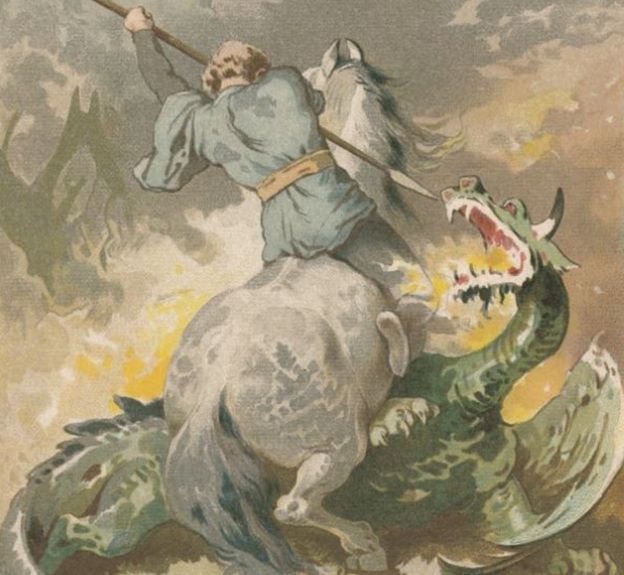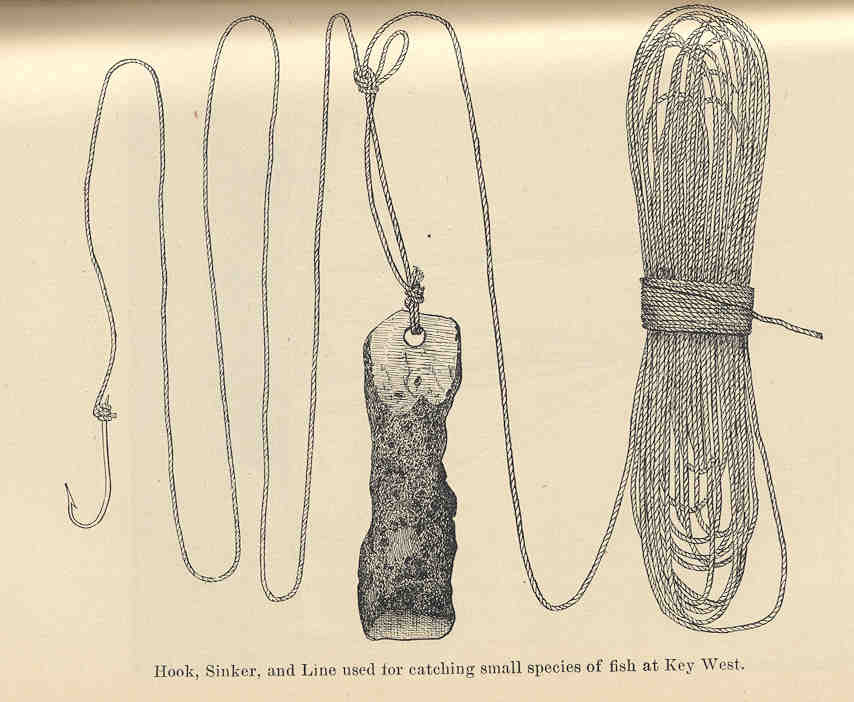Once the children have become familiar with the original non-fiction model text, they are ready to move into the second phase, which involves using the original as a basis for creating something new – writing their own version. Pie Corbett outlines the approach in these notes. IMAGE: John Campbell [CC0], via Wikimedia Commons
Tell Me a Dragon teaching notes
These Teachers’ Notes have been specially written by Pie Corbett to assist teachers and librarians in the promotion and teaching of Tell Me a Dragon by Jackie Morris in schools and to help foster a love of good books, literature and reading in children.
Sentence structure progression
Rehana and Rashida from Yew Tree Community School in Birmingham, a Talk for Writing Training School, have kindly shared their toolkit showing how sentence structure progresses across the years.
Digging deeper into picture books
Voices in the Park author Anthony Browne is a former Children’s Laureate. His books are part of a game he plays with the readers. But Voices in the Park is more than surreal entertainment, it is rich in many layers of meaning. Here are 7 suggested Talk for Writing activities to deepen understanding.
Creating a playful poem
A unit of creative work inspired by the poems ‘In the City of Silences’ and ‘The Cave of Curiosity’, the latter based on the simple idea of creating a place (cave) and linking it to an abstract idea (curiosity). The unit covers an abstract noun game, shared and independent writing.
Sightings of dragons
Pie Corbett outlines a work unit which includes diary entries, persuasive writing, shared writing, boxing up a recount and features four model texts. IMAGE: Alexander Zick (published 1899) [Public domain], via Wikimedia Commons
Hook, line and sinker
Whether you’re after inside hooks, outside hooks, role play hooks or experience hooks, Talk for Writing trainer Jamie Thomas has it all covered and shares his hook ideas.




